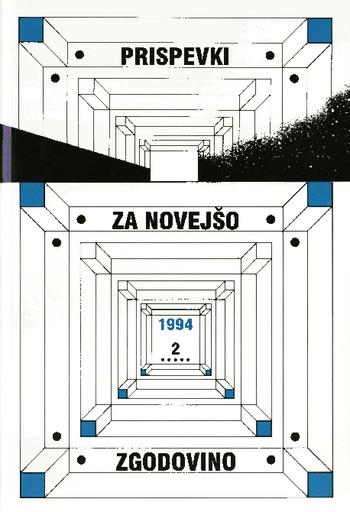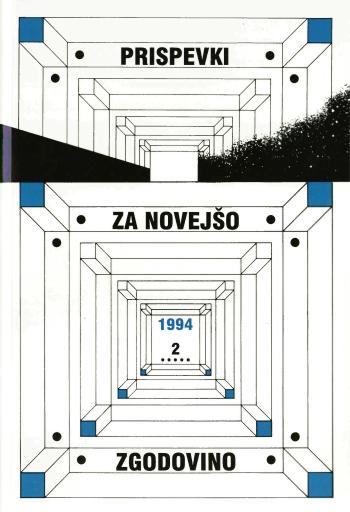/
Periodicals
/
Prispevki za novejšo zgodovino
Hungarian Occupiers in the Prekmurje Region and Slovenian Intellectuals


This work by Bojan Godeša is licensed under Creative Commons Attribution-NonCommercial-NoDerivs 4.0 International
Files (1)

Description
Historically, Prekmurje had been considered an integral part of Hungary by the Hungarian occupiers who eventually annexed it in December 1941. From amongst the local Slovenian intelligentsia, who were mostly teachers and priests, the occupiers distinguished between settlers and natives. Teachers who had settled after 1918 were deported and replaced by those from the inland. The Protestant clergy were mostly of pro-Hungarian orientation and collaborated with the occupiers' administration The Catholic clergy, however, who were nationally aware, were transferred to the Hungarian area of the Szombathely diocese, and the most obdurate even imprisoned. Most of the remaining intelligentsia sought refuge in Budapest, Pecz and Ljubljana and did not take part in the otherwise weak Resistance Movement.
Metadata (12)
- identifierhttps://hdl.handle.net/11686/2142
- title
- Madžarski okupator v Prekmurju in slovenski izobraženci
- Hungarian Occupiers in the Prekmurje Region and Slovenian Intellectuals
- creator
- Bojan Godeša
- contributor
- Jasna Fischer (odg. ur.)
- subject
- druga svetovna vojna
- Prekmurje
- madžarska okupacija
- slovenskski izobraženci
- katoliška duhovščina
- protestantska duhovščina
- odpor
- preseljevanje
- description
- Historically, Prekmurje had been considered an integral part of Hungary by the Hungarian occupiers who eventually annexed it in December 1941. From amongst the local Slovenian intelligentsia, who were mostly teachers and priests, the occupiers distinguished between settlers and natives. Teachers who had settled after 1918 were deported and replaced by those from the inland. The Protestant clergy were mostly of pro-Hungarian orientation and collaborated with the occupiers' administration The Catholic clergy, however, who were nationally aware, were transferred to the Hungarian area of the Szombathely diocese, and the most obdurate even imprisoned. Most of the remaining intelligentsia sought refuge in Budapest, Pecz and Ljubljana and did not take part in the otherwise weak Resistance Movement.
- Prekmurje je madžarski okupator štel za historično pripadajoči del madžarske države in ga decembra 1941 tudi anektira!. V odnosu do slovenskih izobražencev, povečini so to bili učitelji in duhovniki, je razlikoval med prišleki in staroselci. Po 1918 naseljene učitelje je izgnal in nastavil učitelje iz notranjosti države. Protestantska duhovščina je bila povečini proogrsko usmerjena in je sodelovala z okupacijsko upravo, katoliška duhovščina pa je bila nacionalno slovensko orientirana, zato je dosegel, da so bili premeščeni v madžarski del škofije Szombathely, najbolj uporne pa je tudi zaprl. Ostalo izobraženstvo se je povečini zateklo v Budimpešto, Peč, Ljubljano in ni sodelovalo v sicer šibkem odporniškem gibanju.
- publisher
- Inštitut za novejšo zgodovino
- date
- 1994
- type
- besedilo
- language
- Slovenščina
- isPartOf
- rights
- license: ccByNcNd
Citirano v (1)
| Tipologija | Avtor(ji) | Naslov | Kraj | Založba | Leto |
|---|---|---|---|---|---|
| 1.16 Uvodnik, predgovor, spremna beseda | Kerec, Darja ; Kovács, Attila | Vzpostavitev madžarske okupacijske oblasti v Prekmurju | Ljubljana | Znanstvena založba Filozofske fakultete | 2020 |
